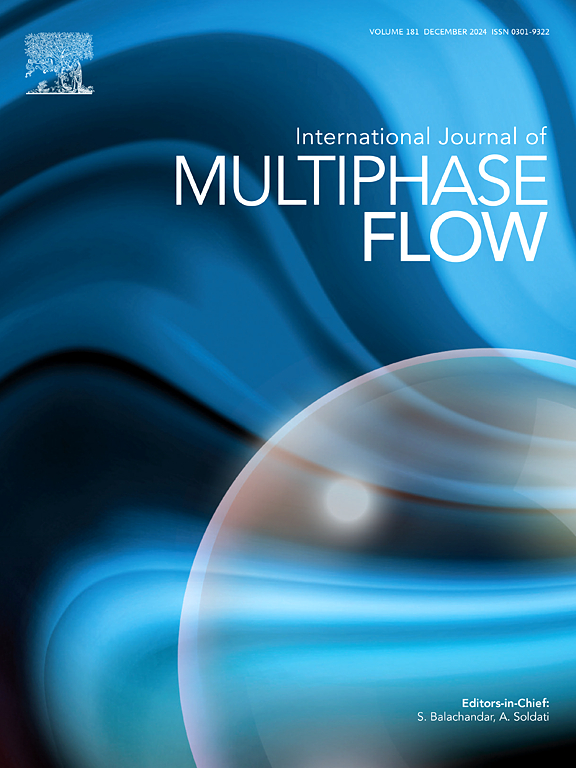Effect of groove sizes on the dynamic behavior of droplets impacting grooved cylindrical superhydrophobic surfaces
IF 3.6
2区 工程技术
Q1 MECHANICS
International Journal of Multiphase Flow
Pub Date : 2025-01-14
DOI:10.1016/j.ijmultiphaseflow.2025.105134
引用次数: 0
Abstract
Droplet impact on curved surfaces decorated with macroscopic structures is a common phenomenon in many industrial applications, yet the underlying mechanisms remain elusive. This study investigates the effects of groove width ratios (δw = D0/w) and groove depth ratios (δh = D0/h) through numerical simulations. The wettability transition thresholds, from the Cassie state to the Wenzel state, were determined within the range of δw from 6.15 to 24.6 and δh from 6.15 to 2.46, with the Weber number (We) varying from 3 to 30. It was found that a higher δw value correlates with a higher Weber number in the Wenzel state, while a higher δh value corresponds to a lower Weber number in the same state. Additionally, droplet spreading is influenced by both dw and dh, and the promotion or inhibition of droplet spreading becomes more pronounced as the Weber number increases. Through theoretical analysis, a prediction model for the relationship between the dimensionless axial maximum spreading diameter and the dimensionless azimuthal maximum spreading diameter was established. Furthermore, the relationship between contact time and Weber number was elucidated. These insights can provide valuable guidance for the design of superhydrophobic surface structures.

求助全文
约1分钟内获得全文
求助全文
来源期刊
CiteScore
7.30
自引率
10.50%
发文量
244
审稿时长
4 months
期刊介绍:
The International Journal of Multiphase Flow publishes analytical, numerical and experimental articles of lasting interest. The scope of the journal includes all aspects of mass, momentum and energy exchange phenomena among different phases such as occur in disperse flows, gas–liquid and liquid–liquid flows, flows in porous media, boiling, granular flows and others.
The journal publishes full papers, brief communications and conference announcements.

 求助内容:
求助内容: 应助结果提醒方式:
应助结果提醒方式:


